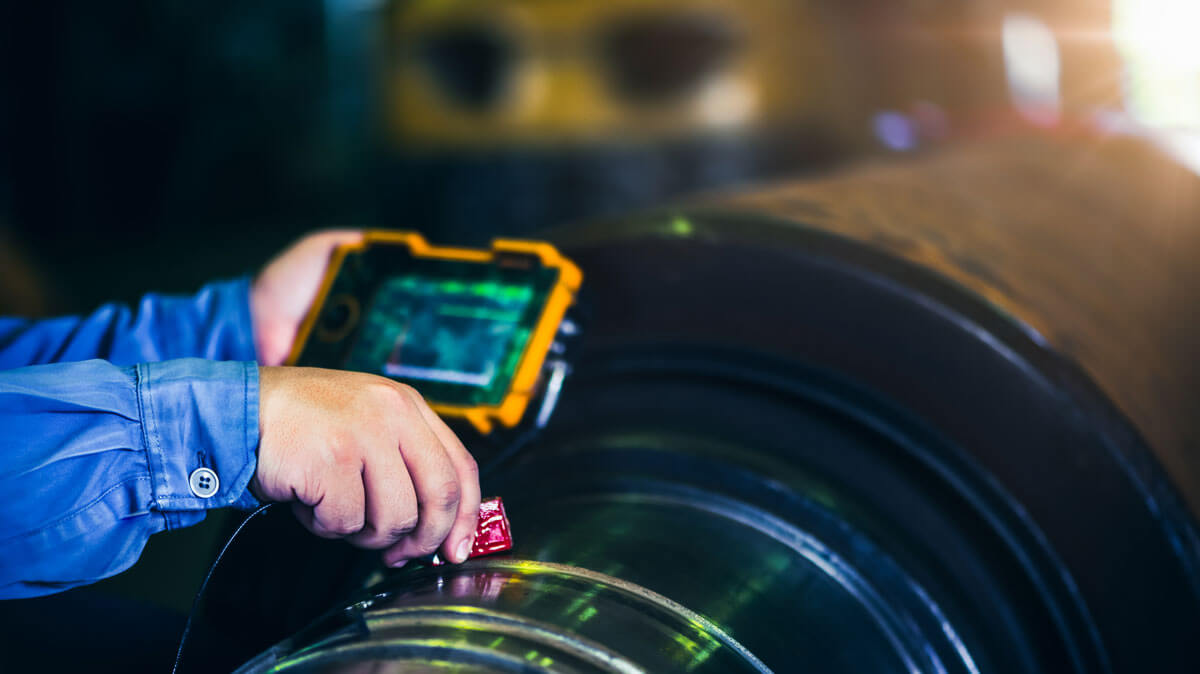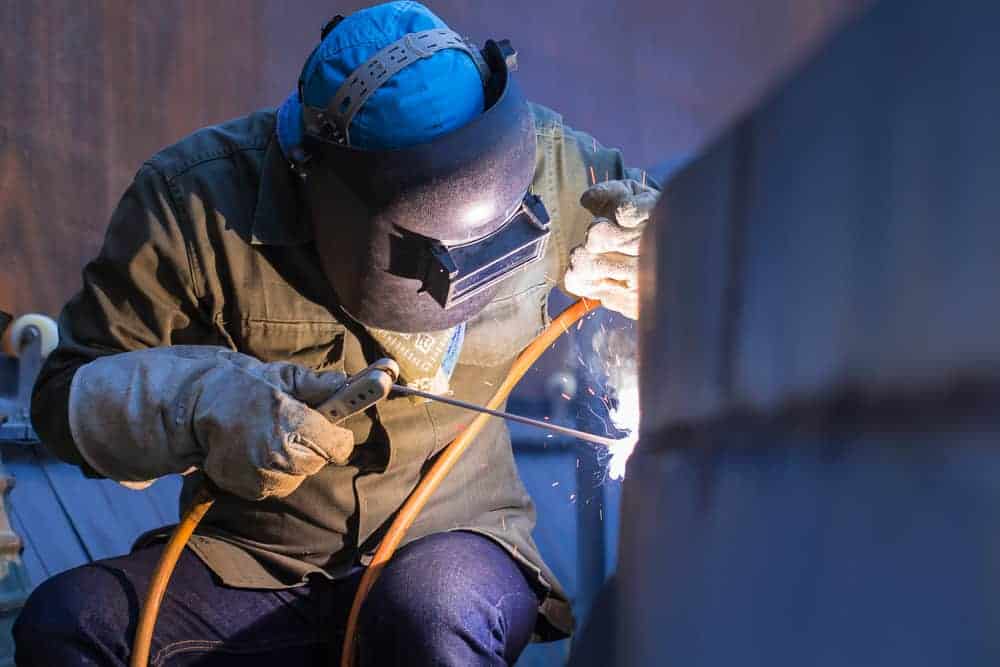Why Hire Specialist Welding Inspection Milwaukee for Your Tasks?
Why Hire Specialist Welding Inspection Milwaukee for Your Tasks?
Blog Article
A Comprehensive Checklist for Effective Welding Inspection Practices
In the realm of welding, the integrity of structures is critical, requiring an extensive method to evaluation techniques. Checking out these important components can yield understandings that greatly influence welding procedures.
Understanding Welding Criteria
Welding criteria play an important duty in making certain the quality and safety of bonded structures and parts. These standards establish the standards for products, procedures, screening, and evaluation, thus providing a structure for constant quality control in welding processes. Various companies, including the American Welding Society (AWS), the International Company for Standardization (ISO), and the American Society of Mechanical Engineers (ASME), have created comprehensive requirements that regulate various aspects of welding.
Recognizing welding requirements is necessary for professionals in the area, as adherence to these standards minimizes the risk of defects and failures in welded joints. These criteria cover specific requirements for weld top quality, including acceptable tolerances, the sort of welding strategies to be used, and the qualifications needed for inspectors and welders.

Pre-Welding Examination Steps
Prior to any welding process commences, a thorough pre-welding inspection is important to determine possible issues that may endanger the quality of the weld. This initial action functions as an essential structure for ensuring compliance with relevant welding codes and criteria.
The initial step in the pre-welding evaluation is to validate the products being made use of. This includes checking for the correct kind and quality of metals as defined in the project documentation. Next, it is vital to examine the fit-up of the components to ensure correct alignment and joint setup. Imbalance can lead to poor infiltration and architectural weaknesses.
Additionally, examining the sanitation of the surfaces is crucial; impurities such as paint, oil, or corrosion can detrimentally influence the high quality of the weld. Following this, an extensive analysis of the welding tools need to be conducted, guaranteeing that it is adjusted and in great functioning problem.
Lastly, evaluating the certifications of the welding personnel is essential. Welders need to have the necessary qualifications and experience to carry out the particular welds needed for the project. By adhering to these pre-welding inspection steps, the likelihood of problems and failings in the last weld can be considerably minimized.

In-Process Inspection Strategies
In-process assessment techniques play an important duty in guaranteeing the stability and top quality of welds as they are being carried out. These strategies allow assessors to recognize issues or deviations from specifications in genuine time, therefore avoiding expensive fixings and making sure adherence to layout needs.
One key strategy involves aesthetic inspection, where assessors assess the weld grain for uniformity, infiltration, and proper account. This can be complemented by the use evaluates to gauge weld measurements, making certain compliance with established resistances. In addition, the application of non-destructive testing (NDT) techniques, such as ultrasonic screening or magnetic fragment screening, during the welding procedure can disclose subsurface defects that might not show up externally.
An additional important aspect is keeping an eye on welding specifications, consisting of voltage, amperage, and take a trip speed. Consistency in these parameters is critical for accomplishing optimum weld top quality. Recording these criteria throughout the welding operation provides a deducible document for future recommendation.
Training workers in correct evaluation strategies and making use of proper devices improves the efficiency of in-process assessments. By integrating these methods, companies can accomplish higher high quality welds, minimize rework, and inevitably guarantee the safety and security and reliability of welded structures.
Post-Welding High Quality Checks
Following the conclusion of welding procedures, post-welding top quality checks are important to confirm that the welds fulfill all defined demands and requirements. These checks are necessary why not find out more for making certain the integrity and toughness of the bonded joints. The evaluation procedure typically starts with an aesthetic assessment, evaluating for surface problems such as fractures, porosity, or insufficient fusion.
Subsequently, non-destructive screening (NDT) approaches, such as ultrasonic testing, radiographic testing, or magnetic fragment testing, might be utilized to discover internal defects that are not noticeable to the naked eye. Each technique has its special benefits and is picked based on the weld's area, material kind, and the nature of the application.
Analyzing the mechanical homes of the weld, including tensile strength and ductility, can supply additional guarantee of performance under operational conditions. Overall, detailed post-welding inspections are crucial for preserving look at this site efficiency, adherence, and safety to governing and industry requirements.
Documentation and Coverage
How can effective documents and reporting improve the welding assessment procedure? Exact documentation and extensive reporting are vital elements that ensure the stability and quality of welding operations. Welding Inspection Milwaukee. They work as an official document of assessment findings, assisting in accountability and traceability in compliance with industry requirements
A well-structured coverage system enables assessors to clearly interact any non-conformances, areas, or disparities calling for improvement. This transparency promotes an environment of continuous improvement, as stakeholders can readily assess past efficiency and carry out rehabilitative activities.
Furthermore, efficient documentation consists of detailed records such as welding procedure requirements (WPS), welder credentials, and examination lists. These elements provide a framework for assessing weld quality and adherence to developed standards. In the occasion of disagreements or quality problems, comprehensive paperwork serves as a dependable recommendation, decreasing ambiguity and securing all celebrations included.
Last but not least, preserving organized records assists in training and accrediting workers, ensuring that industry finest methods are maintained. Inevitably, precise documents and reporting not only boost the welding examination process but also contribute to the total safety and reliability of bonded structures.

Conclusion
To conclude, a comprehensive checklist for efficient welding evaluation practices is vital for guaranteeing high quality and safety and security in welded frameworks. Adherence to developed welding standards, meticulous pre-welding evaluations, strenuous in-process examinations, and detailed post-welding quality checks collectively contribute to the integrity of welded joints. Additionally, thorough documents and reporting of evaluation findings enhance accountability and facilitate continuous improvement. Implementing these techniques will significantly aid in compliance with sector standards and ultimately cultivate a culture of high quality in welding operations.
Welding requirements play a critical duty in explanation guaranteeing the quality and security of bonded elements and frameworks. Various organizations, including the American Welding Culture (AWS), the International Organization for Standardization (ISO), and the American Society of Mechanical Engineers (ASME), have actually created detailed requirements that regulate different aspects of welding.
Following the conclusion of welding procedures, post-welding top quality checks are important to validate that the welds meet all defined demands and requirements - Welding Inspection Milwaukee.In final thought, an extensive list for effective welding assessment practices is important for making certain quality and safety in welded frameworks. Adherence to established welding criteria, meticulous pre-welding assessments, rigorous in-process evaluations, and comprehensive post-welding top quality checks jointly add to the honesty of bonded joints
Report this page